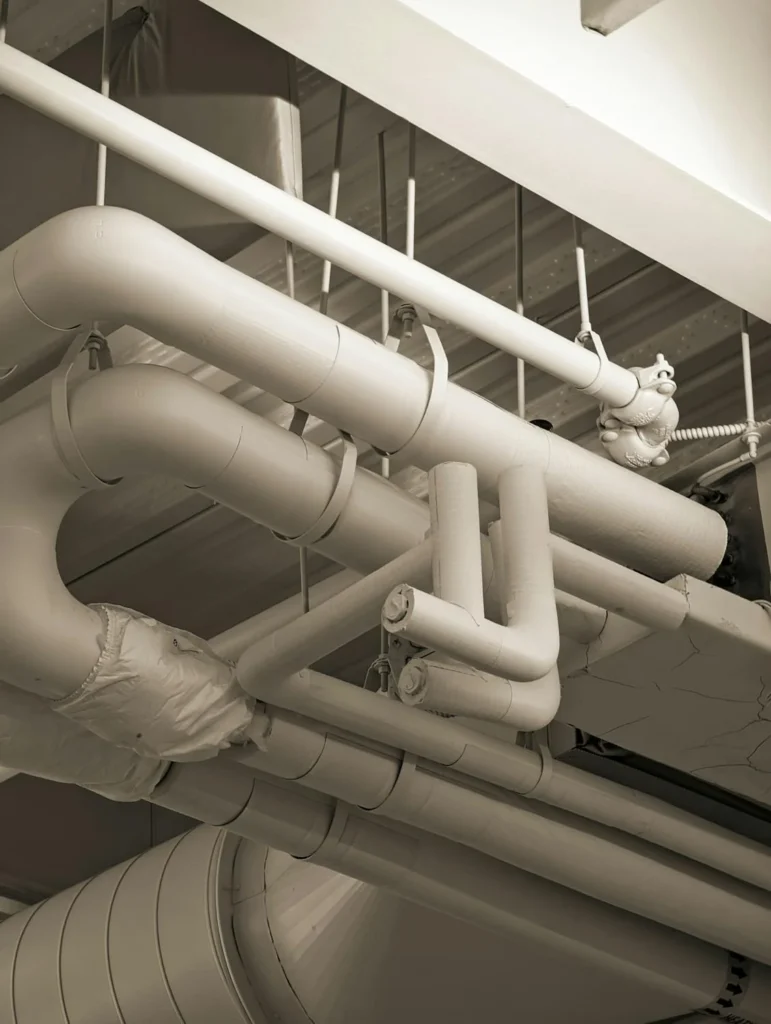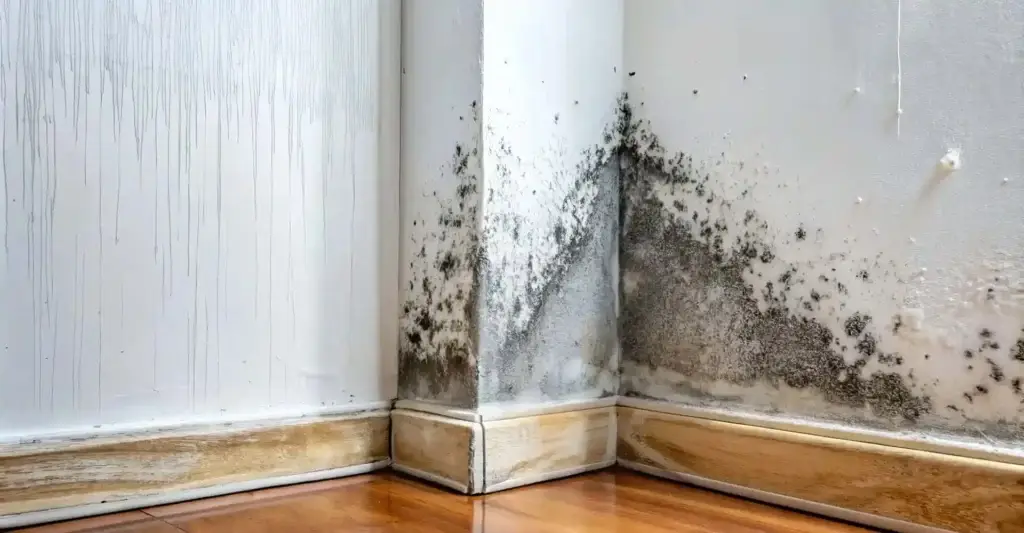Quick answer
Ridding your property of stubborn cigarette smell, caused by persistent ‘third-hand smoke’ residue, requires thorough effort. Begin by ensuring good ventilation (opening windows and using fans) and placing baking soda or activated charcoal to absorb odours. A crucial step is deep cleaning all surfaces: wash walls, ceilings, and hard floors with appropriate cleaners, and steam clean carpets and soft furnishings. For heavy or embedded contamination, professional odour removal services are essential. Methods like ozone treatment chemically neutralise deeply embedded smoke particles, offering guaranteed results. Addressing this odour fully is vital to mitigate health risks and prevent a decrease in property value.
Lingering smoke odour in UK property
You’ve finally found your dream home. It’s the perfect size, in the ideal location, and within your budget. But as you step inside and take a deep breath, you realise something’s not quite right, the unmistakable, lingering odour of cigarette smoke.
You didn’t notice it during the viewings, but now it’s unavoidable. You throw open the windows, hoping a fresh breeze will work its magic. But as the hours and days pass, the smell clings stubbornly to every surface, reminding you of its presence every time you walk through the door.
So, what can you do? Can you ever fully remove the smell of cigarettes from a property? The answer is yes but it takes more than just airing out the space.
Why does cigarette smoke linger?
Cigarette smoke is more than just an unpleasant smell, it’s a complex mix of toxic chemicals that embed themselves deep into walls, carpets, furniture, and even ceilings. This is known as third-hand smoke, and it’s not just a nuisance; it can also pose health risks, especially to young children.
The science of third-hand smoke
Every cigarette releases thousands of chemicals, including ammonia, carbon monoxide, and formaldehyde. When smoke is exhaled, these particles don’t just disappear, they settle onto surfaces and become trapped in porous materials like paint, upholstery, and plaster. Over time, the residue builds up, forming a sticky, yellowish film that’s difficult to remove.
A study from San Diego State University found that third-hand smoke can persist for months, even in well-ventilated areas. In fact, it can remain on indoor surfaces for up to 18 months! This means that without proper treatment, the smell of cigarette smoke can haunt a property long after the last cigarette has been stubbed out.
How to get rid of cigarette smell in your home
While cigarette odours can be tough to eliminate, the right combination of cleaning techniques and professional treatments can restore your home to its fresh, smoke-free state.
1. Start with Ventilation
Opening all windows and doors is a good first step, but it won’t completely remove the smell. To boost airflow:
- Use fans to direct fresh air through the property.
- Place bowls of baking soda around the home to absorb odours.
- Use activated charcoal, which is highly effective at neutralising smoke particles.
2. Deep clean all surfaces
Because cigarette smoke clings to walls, ceilings, and floors, every surface needs a deep clean.
- Walls & ceilings: Wash with a solution of white vinegar and warm water, or a mild detergent.
- Windows & glass surfaces: Use an ammonia-based cleaner to cut through the smoke residue.
- Hard floors & skirting boards: Mop with a mixture of hot water and baking soda.
- Light fixtures & switches: Wipe down to remove sticky smoke residue.
3. Treat soft furnishings & carpets
Carpets, curtains, and upholstered furniture absorb smoke odours like a sponge.
- Steam cleaning is the best way to remove embedded smoke particles.
- Sprinkle baking soda on carpets before vacuuming.
- Wash curtains, cushion covers, and removable fabrics in hot water with vinegar.
4. Repaint walls and ceilings
In extreme cases, repainting may be necessary to fully seal in the odour.
- Wash walls with sugar soap before painting.
- Apply a stain-blocking primer to prevent old smoke particles from seeping through.
- Use low-VOC paint to avoid introducing new chemical odours.
5. Clean or replace air ducts and filters
If your home has a ventilation system, the smell of cigarettes could be trapped in the ductwork.
- Replace HVAC filters and clean vents.
- Use an air purifier with a HEPA filter to remove airborne smoke particles.
Professional odour removal services
For homes with heavy smoke contamination, professional treatment may be necessary. The most effective method is ozone treatment, which breaks down smoke molecules at a chemical level.
What is ozone treatment?
Ozone generators release O3 (ozone) molecules that penetrate deep into surfaces, neutralising smoke odours completely. This method is highly effective but should only be carried out by professionals, as ozone exposure can be harmful if not managed correctly.
Why choose a professional service?
- Guaranteed results: Unlike DIY methods, professional treatments ensure full odour removal.
- Specialist equipment: Ozone machines, dry ice blasting, and thermal fogging can reach areas that household cleaners can’t.
- Expert knowledge: Technicians assess the severity of the odour and tailor treatments accordingly.
Why you shouldn’t ignore cigarette odours
Health risks
Cigarette smoke isn’t just unpleasant—it’s hazardous. According to Cancer Research UK, smoking is the leading cause of cancer in the UK, responsible for around 70% of lung cancer cases. Even exposure to third-hand smoke has been linked to respiratory issues and other health concerns.
Impact on property value
A home that smells like cigarettes is a major red flag for potential buyers. Studies suggest that homes affected by tobacco smoke sell for up to 30% less than comparable smoke-free properties. If you’re planning to sell in the future, investing in professional odour removal now could save you thousands in lost property value.
Final thoughts
Getting rid of cigarette smoke in your home requires more than just opening windows and spraying air freshener. To truly eliminate the odour, you need a combination of deep cleaning, ventilation, and possibly professional treatment.
If you’re struggling with a stubborn cigarette smell in your home, it may be time to call in the experts. Professional odour removal services can ensure that your home is not only fresh and welcoming but also free from harmful third-hand smoke residues.
Don’t let the ghost of cigarettes past haunt your dream home, take action today and enjoy a cleaner, healthier living space. Contact one of the team at Ideal Response.
Smoke odour removal for UK property: Frequently asked questions
What is the most effective way to remove cigarette smell from a property?
The most effective way to remove cigarette smell involves a combination of thorough ventilation, deep cleaning all surfaces, and for heavy contamination, professional odour removal services. Ventilation and absorption methods (like baking soda) help initially, but expert services utilising techniques like ozone treatment chemically neutralise deeply embedded “third-hand smoke” for lasting results.
How long does cigarette smoke smell typically last in a house?
Lingering cigarette smoke smell, caused by “third-hand smoke” residue, can persist for months, sometimes even up to 18 months, in a property if not properly treated. The toxic chemicals embed themselves deep into porous surfaces like walls, carpets, and fabrics, making it challenging to eliminate without comprehensive cleaning and specialised methods.
What DIY methods can I use to reduce cigarette smell in my home?
Effective DIY methods include ensuring ample ventilation by opening windows and using fans. Place bowls of baking soda or activated charcoal around rooms to absorb odours. Perform a deep clean by washing walls, ceilings, and hard floors with cleaners, and steam clean carpets and soft furnishings. Using a stain-blocking primer before repainting can also help seal in odours.
Are there health risks associated with lingering cigarette smoke smell (third-hand smoke)?
Yes, “third-hand smoke” is a complex mix of toxic chemicals that can embed into surfaces and fabrics, posing health risks even after active smoking ceases. Prolonged exposure can contribute to respiratory issues, especially for vulnerable individuals like children, and is an unpleasant nuisance affecting indoor air quality.
When should I hire professionals for cigarette smoke odour removal?
You should hire professionals for cigarette smoke odour removal if your property has heavy smoke contamination, if DIY methods prove ineffective, or if the smell is deeply embedded in porous materials. Professionals have the specialised equipment (like ozone machines or thermal fogging) and expertise to chemically neutralise the odours for guaranteed, long-term results.
What professional techniques are used to eliminate stubborn cigarette odours?
Professional techniques for eliminating stubborn cigarette odours include ozone treatment, which uses O3 molecules to penetrate surfaces and chemically neutralise smoke particles. Other advanced methods may involve dry ice blasting for surface cleaning and thermal fogging, which reopens porous materials to reach and neutralise trapped smoke odours.
How do you remove cigarette smell from specific items like walls, carpets, or furniture?
To remove cigarette smell from specific items: Wash walls and ceilings with white vinegar or a mild detergent. For hard floors, mop with hot water and baking soda. Steam clean carpets after sprinkling baking soda on them. Wash removable fabrics (curtains, upholstery covers) in hot water with vinegar. For non-washable furniture, professional cleaning or ozone treatment is recommended.

Tahlia Ibrahim - Delivery Manager
Tahlia has over four and a half years of in-depth experience across various facets of the disaster recovery industry. Having progressed through roles in marketing and sales to her current position, Tahlia possesses a comprehensive understanding of the entire business operation, from initial client contact to meticulous service delivery. A certified BioSweep Specialist, she excels in advanced odour elimination techniques, ensuring thorough restoration.





















